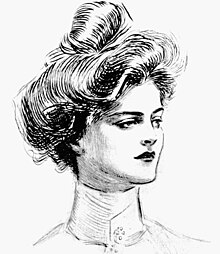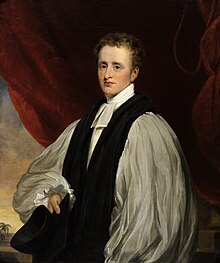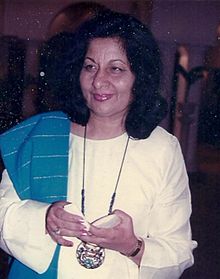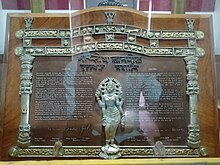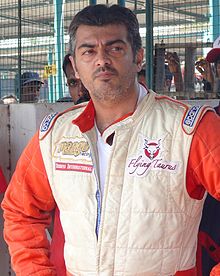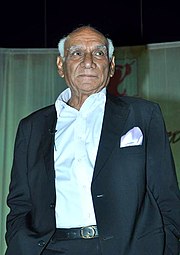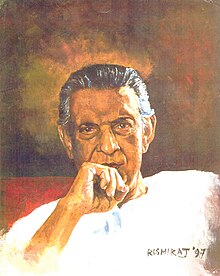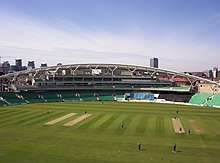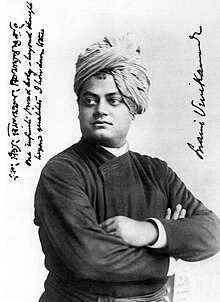Portal:India
Introduction


India, officially the Republic of India (ISO: Bhārat Gaṇarājya), is a country in South Asia. It is the seventh-largest country by area; the most populous country from June 2023 and from the time of its independence in 1947, the world's most populous democracy. Bounded by the Indian Ocean on the south, the Arabian Sea on the southwest, and the Bay of Bengal on the southeast, it shares land borders with Pakistan to the west; China, Nepal, and Bhutan to the north; and Bangladesh and Myanmar to the east. In the Indian Ocean, India is in the vicinity of Sri Lanka and the Maldives; its Andaman and Nicobar Islands share a maritime border with Thailand, Myanmar, and Indonesia. (Full article...)
Selected pictures

Indigenous tribals have inhabited Mumbai (Bombay) since the Stone Age. The Kolis and Aagri (a Marathi-Konkani people) were the earliest known settlers of the islands. Between the 2nd century BCE and 10th century CE, the islands came under the control of successive indigenous dynasties: the Satavahanas, Abhiras, Vakatakas, Kalachuris, Konkan Mauryas, Chalukyas, Rashtrakutas, Silharas & Cholas.
Bhima of Mahikavati established a small kingdom in the area during the late 13th century, and brought settlers. The Delhi Sultanate captured the islands in 1348, and they were later passed to the Sultanate of Guzerat from 1391. The Treaty of Bassein (1534) between the Portuguese viceroy Nuno da Cunha and Bahadur Shah of Gujarat, placed the islands into Portuguese possession in 1534. (Full article...)
Bhakta Prahlada is the third Telugu film based on Prahlada, after the 1932 and 1942 films of the same name. Unlike the earlier two, which were filmed in black-and-white, this version was shot in Eastman Color Negative film. Its script was completed by May 1965. Since Bhakta Prahlada and Ave Kallu were simultaneously produced by AVM Productions, principal photography and post-production were delayed and lasted for one-and-a-half years. (Full article...)
In his research, Fuchs conducted field studies in Central India. He focused particularly on the customs and beliefs of modern Indian tribes. Originally when he moved to India, he researched solely the social and cultural customs of modern-day central Indian tribes. After founding the Institute of Indian Culture, Fuchs researched the cultures of ancient India, back to India's original inhabitants. (Full article...)
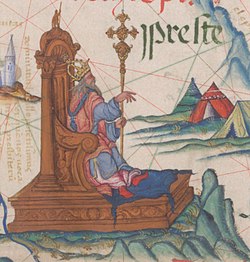
Prester John (Latin: Presbyter Ioannes) was a legendary Christian patriarch, presbyter, and king. Stories popular in Europe in the 12th to the 17th centuries told of a Nestorian patriarch and king who was said to rule over a Christian nation lost amid the pagans and Muslims in the Orient. The accounts were often embellished with various tropes of medieval popular fantasy, depicting Prester John as a descendant of the Three Magi, ruling a kingdom full of riches, marvels, and strange creatures.
At first, Prester John was imagined to reside in India. Tales of the Nestorian Christians' evangelistic success there and of Thomas the Apostle's subcontinental travels as documented in works like the Acts of Thomas probably provided the first seeds of the legend. After the coming of the Mongols to the Western world, accounts placed the king in Central Asia, and eventually Portuguese explorers came to believe that the term was a reference to Ethiopia, by which time it had been an isolated Christian "exclave" distant from any other Christian-ruled territory. (Full article...)
Ranganathan Madhavan (born 1 June 1970), known as R. Madhavan or Maddy, is an Indian actor, screenwriter, film producer and film director who predominantly works in Tamil and Hindi cinema. He has won one National Film Award, four Filmfare Awards South, two Tamil Nadu State Film Awards and five SIIMA Awards. As of 2023, Madhavan is the President of FTII, Pune.
Madhavan attained his first break in Tamil cinema with Mani Ratnam's romantic drama Alai Payuthey (2000) and followed it with further romantic roles in Gautham Vasudev Menon's directorial debut Minnale and Madras Talkies' Dumm Dumm Dumm (both 2001). He had commercial successes in Run (2002), Jay Jay (2003), Thambi (2006) and Rendu (2006) and gained praise for his performances in Kannathil Muthamittal (2002), Anbe Sivam (2003), Nala Damayanthi (2003) and Aayutha Ezhuthu (2004). In the mid-2000s, Madhavan inclined to Hindi films with pivotal roles in three highly successful productions: the patriotism Rang De Basanti (2006), Mani Ratnam's biopic Guru (2007) and the comedy-drama 3 Idiots (2009), which went on to become the highest-grossing Indian film of all time at the time of its release. Simultaneously, he continued to appear in Tamil films like Evano Oruvan (2007) and Yavarum Nalam (2009). (Full article...)
Produced on a restricted budget and filmed majorly in sets erected at Golden Film Studios and Vijaya Vauhini Studios, Rakta Sambandham's screenplay was written by Mullapudi Venkata Ramana. Ghantasala composed the soundtrack and background score. C. Nageswara Rao and N. S. Prakasham served as the director of photography and editor respectively. Krishna Rao was the art director. (Full article...)
Swami Vivekananda (/ˈswɑːmi ˌvɪveɪˈkɑːnəndə/; Bengali: [ʃami bibekanɔndo] ; IAST: Svāmī Vivekānanda ; 12 January 1863 – 4 July 1902), born Narendranath Datta (Bengali: [nɔrendronatʰ dɔto]), was an Indian Hindu monk, philosopher, author, religious teacher, and the chief disciple of the Indian mystic Ramakrishna. He was a key figure in the introduction of Vedanta and Yoga to the Western world, and is the father of modern Indian nationalism who is credited with raising interfaith awareness and bringing Hinduism to the status of a major world religion in the late nineteenth century.
Born into an aristocratic Bengali Kayastha family in Calcutta, Vivekananda was inclined from a young age towards religion and spirituality. He later found his guru Ramakrishna and became a monk. After the death of Ramakrishna, Vivekananda extensively toured the Indian subcontinent as a wandering monk and acquired first-hand knowledge of the living conditions of Indian people in then British India. Moved by their plight, he resolved to help them and found a way to travel to the United States, where he became a popular figure after the 1893 Parliament of Religions in Chicago at which he delivered his famous speech beginning with the words: "Sisters and brothers of America ..." while introducing Hinduism to Americans. He made such an impression there that an American newspaper described him as "an orator by divine right and undoubtedly the greatest figure at the Parliament". (Full article...)
Rudaali was a critical and unexpected commercial success. Particular critical praise was directed at Kapadia's performance, with further appreciation of the film's script, music, technical achievements, and Lajmi's direction. The film won three National Film Awards, including Best Actress for Kapadia, and was nominated for three Filmfare Awards, earning Kapadia a Critics Award for Best Performance. Kapadia won Best Actress honours at the 8th Damascus International Film Festival and the 38th Asia-Pacific Film Festival, where Hazarika was awarded for his music. The film was selected as the Indian entry for Best Foreign Language Film at the 66th Academy Awards, but was not nominated. (Full article...)
The story revolves around Samar Anand (Khan), a bomb disposal expert whose diary falls into the hands of an intern Akira Rai (Sharma); the diary recounts his time as a struggling immigrant in London, and later details his whirlwind romance with Meera Thapar (Kaif). (Full article...)
Raja Sir Panaganti Ramarayaningar KCIE (9 July 1866 – 16 December 1928), also known as the Raja of Panagal, was a zamindar of Kalahasti, a Justice Party leader and the First Minister of Madras Presidency from 11 July 1921 to 3 December 1926.
Ramarayaningar was born in Srikalahasti, Chittoor district on 9 July 1866, and fostered in the Vadama Calamur family, whose pro-Brahmin, Mylapore clique influence and political moderation he would come to fiercely oppose. He was educated in Madras and obtained degrees in Sanskrit, law, philosophy and Dravidian languages before entering politics. He was one of the founder-members of the Justice Party and served as its president from 1925 to 1928. (Full article...)

The relics of Sariputta and Moggallana refers to the cremated remains of the Buddhist disciples Sariputta (Sanskrit: Śāriputra; Pali: Sāriputta; Sinhala:Seriyuth සැරියුත්); and Moggallana (Sanskrit: Maudgalyāyana; Pali: Moggallāna;Sinhala: Mugalan මුගලන්). Sariputta and Moggallana (also called Maha Moggallana) were the two chief disciples of the Buddha, often stylized as the right hand and left hand disciples of the Buddha respectively. The two disciples were childhood friends who ordained under the Buddha together and are said to have become enlightened as arahants. The Buddha declared them his two chief disciples, after which they assumed leadership roles in the Buddha's ministry. Both of the chief disciples died a few months before the Buddha near the ancient Indian city of Rājagaha in what is now Bihar, and were cremated. According to Buddhist texts, the cremated remains of the disciples were then enshrined in stupas at notable monasteries of the time, with Sariputta's remains being enshrined at Jetavana monastery and Moggallana's remains being enshrined at Veḷuvana monastery. However, as of 1999 no modern archaeological reports have confirmed this, although in 1851 discoveries were made at other sites.
In 1851, British archaeologists Major Alexander Cunningham and Lieutenant Frederick Charles Maisey discovered relics attributed to the chief disciples during excavations of stupas in the Indian cities of Sanchi and Satdhara. Scholars have theorized that the relics were enshrined in stupas near Rajagaha after the disciples' deaths but were redistributed by later Indian kings such as King Asoka. Following the discovery, the Satdhara relics were sent to the Victoria and Albert Museum in London in 1866, while the Sanchi relics are said to have been lost when a ship carrying the remains sank. Following a Buddhist revival movement in South Asia in the late 19th century, Buddhist organizations including the Maha Bodhi Society began pressuring the British government to return the relics to Asia so they can be properly venerated, with the British government eventually conceding. The relics were sent to Sri Lanka in 1947, where they were on display at the Colombo Museum for nearly two years, and then were put on tour around parts of Asia starting in 1949. The relics were then divided up and permanently relocated in 1952, with portions being enshrined at the Kaba Aye Pagoda in Yangon, Burma, the Maha Bodhi Society temple in Colombo, Sri Lanka, and the Chethiyagiri Vihara in Sanchi, India. (Full article...)
Watson's Hotel (actually Watson's Esplanade Hotel), now known as the Esplanade Mansion, located in the Kala Ghoda area of Mumbai (Bombay), is India's oldest surviving cast iron building. It is probably the oldest surviving multi-level fully cast-iron framed building in the world, being three years earlier than the Menier Chocolate Factory in Noisiel, France, which are both amongst the few ever built. Named after its original owner, John Watson, the cast and wrought iron structure of the building was prefabricated in England, and it was constructed between 1867 and 1869.
The hotel was leased on 26 August 1867 for the terms of 999 years at yearly rent of Rupees 92 and 12 annas to Abdul Haq. It was closed in the 1960s and was later subdivided and partitioned into smaller cubicles that were let out on rent as homes and offices. Neglect of the building has resulted in decay and, despite its listing as a Grade II–A heritage structure, the building is now in a dilapidated state. A documentary film about the building was made in 2019 called The Watson's Hotel. (Full article...)
Gargi, the daughter of sage Vachaknu in the lineage of sage Garga (c. 800-500 BCE) was named after her father Gargi Vachaknavi. From a young age, she evinced a keen interest in Vedic scriptures and became very proficient in fields of philosophy. She became highly knowledgeable in the Vedas and Upanishads in the Vedic times and held intellectual debates with other philosophers. (Full article...)
Mesrop Davtian Taghiadian or Taghiadiants (Armenian: Մեսրոպ Դաւթեան Թաղիադեան; 2 January 1803 – 10 June 1858) was a nineteenth-century Armenian writer, educator and journalist. He wrote prolifically in Classical Armenian and is regarded as one of the first Armenian authors of the Romantic movement, as well as one of the earliest modern Armenian fiction writers.
Taghiadian was born in Iranian-ruled Armenia, but lived most of his life away from his homeland. He was educated at the seminary of Etchmiadzin and traveled throughout Armenia with his teacher collecting folk songs and oral traditions. He attained the rank of deacon in the Armenian Church. Taghiadian emigrated to India to pursue further education. He graduated from Bishop's College in Calcutta (then ruled by the British East India Company, now modern Kolkata) in 1830 and published his first literary works during his time there. In 1831, Taghiadian left India and unsuccessfully attempted to establish a school of his own, first in New Julfa, Iran, then in Armenia. He worked as a teacher in Iran and married Tangkhatun Setian, the daughter of an Armenian merchant, who died in 1837. Taghiadian then lived briefly in Constantinople, where he narrowly escaped a plot against him by the Armenian Patriarch and again settled in Calcutta. In the 1840s and 1850s, he published an Armenian periodical, Azgaser, and ran an Armenian school for boys and girls. Having closed his periodical and school and frequently clashing with other members of the Armenian community of Calcutta, Taghiadian decided to return to Armenia. He fell ill and died on the way to Armenia in Shiraz, Iran in 1858. (Full article...)
Founded in 2014 as a Facebook page, Manjappada later expanded and have branches in each of Kerala's 14 districts and in 12 other Indian states; Keralites in 64 other countries are also part of the group. Manjappada is also known for having one of the largest groups of travelling fans in the country, and their presence in the stadium is often called a yellow sea as they wear as much yellow as possible during the matches of the Blasters. In the 2022–23 Indian Super League season, they displayed a 11752 sq ft tifo, which is so far the largest tifo displayed during a football match in Asia. (Full article...)
The film is partially inspired by the 1991 Telugu film Seetharamayya Gari Manavaralu directed by Kranthi Kumar. Govindudu Andarivadele portrays a "non-resident Indian" named Abhiram who visits his grandfather Balaraju's house as a student of agriculture. He actually came to reconcile the differences between his father, Chandrasekhar Rao, and Balaraju. The pair parted ways as Chadrasekhar went to the UK while Balaraju stayed and built a charitable hospital for local people. Abhiram succeeds in winning over family members, and Balaraju understands the truth behind Abhiram and his attempts. (Full article...)
Bhikshatana (Sanskrit: भिक्षाटन; Bhikṣāṭana; literally, "wandering about for alms, mendicancy") or Bhikshatana-murti (Bhikṣāṭanamūrti) is an aspect of the Hindu god Shiva as the "Supreme mendicant" or the "Supreme Beggar". Bhikshtana is depicted as a nude four-armed man adorned with ornaments who holds a begging bowl in his hand and is followed by demonic attendants and love-sick women.
Bhikshatana is considered a gentler form of Shiva's fierce aspect Bhairava and a gentle phase between Bhairava's two gruesome forms, one of which decapitates one head of the four headed god Brahma and the other of which kills the god Vishnu's gatekeeper. Bhikshatana is the form of Bhairava that Shiva assumes to atone for his sin of severing Brahma's fifth head. He wanders the universe in the form of a naked Kapali mendicant, begging for alms with Brahma's kapala (skullcup) as his begging bowl, until his sin is expiated upon reaching the holy city of Varanasi. (Full article...)
PSLV-C42 was the 44th mission of the Indian Polar Satellite Launch Vehicle (PSLV) program and its 12th mission in the Core Alone (CA) configuration. PSLV-C42 successfully carried and deployed 2 Earth observation satellites in Sun-synchronous orbits at an altitude of 588 kilometres (365 mi). It was launched on 16 September 2018 by the Indian Space Research Organisation (ISRO) from the first launch pad of the Satish Dhawan Space Centre at Sriharikota, Andhra Pradesh. The two international satellites were launched as part of a commercial arrangement between Surrey Satellite Technology Limited (SSTL) and ISRO's commercial arm Antrix Corporation Limited, run under the auspices of the Indian Government's Department of Space. (Full article...)
Kripa (Sanskrit: कृप, lit. 'pity', IAST: Kṛpa), also known as Kripacharya (Sanskrit: कृपाचार्य, IAST: Kṛpācārya), is a figure in Hindu mythology. According to the epic Mahabharata, he was a council member of Kuru Kingdom and a teacher of the Pandava and Kaurava princes.
Born to warrior-sage Sharadvan and apsara Janapadi in an extraordinary manner, Kripa and his twin-sister Kripi were adopted by King Shantanu of Kuru Kingdom. Kripa was trained by his birth father and became a great archer like him. Later in the epic, he fought on the Kauravas's side against the Pandavas in the Kurukshetra war and was among the three survivors on the Kaurava side, along with Ashwatthama and Kritavarma. (Full article...)
News
- 13 September 2024 – Insurgency in Jammu and Kashmir
- Two Indian soldiers are killed in action in clashes with separatists in Kishtwar, Jammu and Kashmir, India. (NDTV)
- 12 September 2024 – Russian invasion of Ukraine
- A spokesperson for the Indian Foreign Ministry say that about 45 Indian nationals have been discharged from the Russian military, with efforts currently underway to get a further 50 Indians released. (Reuters)
- 11 September 2024 –
- Hundreds of workers at Jomo Kenyatta International Airport in Nairobi, Kenya, go on strike to protest against a planned deal to lease the airport to the Indian conglomerate Adani Group for 30 years. (Al Jazeera)
- 7 September 2024 – Manipur violence
- Ethnic violence between the Meitei and Kuki tribes kills five people in Manipur, India. The Government of Manipur orders all schools in the state to remain closed in response. (Al Jazeera)
- 2 September 2024 –
- One person is fatally shot and at least four other people are injured including one person who was critically injured in a mass shooting at the West Indian Day Parade in Brooklyn, New York, United States. (AP)
Did you know...
- ... that the India national team were victorious in football at the 1951 and 1962 Asian Games?
- ... that Josephine Gates Kelly of the Standing Rock Reservation once hitchhiked to Washington, D.C., to protest portions of the Indian Reorganization Act?
- ... that Aishwarya Rai Bachchan was the first Indian actress to be a juror at the Cannes Film Festival?
- ... that Grandpa Indian, created in the 1930s to replace Santa Claus in Brazil, was portrayed as adorned in colorful bird feathers, bringing gifts to Brazilian children?
- ... that Jewish Indian theory, the erroneous idea that some lost tribes of Israel became ancestors to Native Americans, influenced the Book of Mormon?
- ... that according to the book Price of the Modi Years, the popularity of Indian prime minister Narendra Modi does not depend on his performance?
Topics related to India
Timeline of Indian history, Indus Valley Civilisation, Dholavira, Science and technology in ancient India, Meluhha, Aryan invasion theory, Out of India theory, Greek conquests in India, Indian maritime history, Maurya Empire, Ashoka, Shunga Empire, Hoysala Empire, Vijayanagara, Satavahana dynasty, Indo-Greek Kingdom, Indo-Scythians, Indo-Parthian Kingdom, Kushan Empire, Western Satraps, Gupta Empire, Chola dynasty, Pala Empire, Islamic incursions in India, Mughal Empire, Maratha Empire, British Raj, East India Company, Governor-General, Viceroy, War of Independence, 1857, Indian independence movement, Indian National Army, Azad Hind, Quit India Movement, Partition of India, History of Republic of India, Non-Aligned Movement, Sino-Indian War, Indo-Pakistani War of 1947–1948, Indo-Pakistani War of 1965, Indo-Pakistani War of 1971, Kargil War, 2001–02 India–Pakistan standoff, Military, Demographic
Law, Hindu law, Constitution, Political parties (Indian National Congress, Bharatiya Janata Party), Foreign relations, Elections, Political divisions, Reservation in India
Government agencies, Legislative branch (Lok Sabha, Rajya Sabha) Executive branch (President & Vice President, Prime Minister & Deputy Prime Minister, Cabinet Ministers, Cabinet Secretary, Election Commission, Foreign Minister; Law enforcement: CBI, CID, Intelligence: IB, RAW), Directorate General of Income Tax Investigation Judicial branch (Supreme Court), Armed Forces (Army, Navy, Air Force, Border Security Force, Coast Guard)
Himalayas, Western Ghats, Eastern Ghats, Indo-Gangetic Plain, Deccan Plateau, Thar Desert, Ganges, Rann of Kutch, Brahmaputra River, Northeast India; Mountains, Valleys, Islands, Rivers; States and union territories, Cities, Districts, Regions, Fauna, Flora
Rupee, Bombay Stock Exchange, National Stock Exchange, Standard of living, Companies, Reserve Bank of India, Energy policy (Solar, Wind, Nuclear), Tourism, Transport (Expressways, Rail transport, Auto rickshaw),
Languages, Standard of living, Religion
Music (Carnatic, Hindustani, Indi-pop), Dance, Languages, Literature, Architecture, Film & TV, Cuisine, Holidays, Folklore, Education, Media, Indian martial arts
Indian Council of Agricultural Research (ICAR), Indian Institute of Astrophysics, National Centre for Software Technology, AIIMS, IISc, IIT, NIT, BITS-Pilani, INRegistry, Indian numbering system, Indian Space Research Organisation, National Internet Exchange of India, ICRISAT, International Institute of Information Technology, Hyderabad
Indian English, Indian nationality law, Numbering system, Indian Space Research Organisation, Telecommunications, National Highways Development Project, Flag, Vehicle registration plates, Indian nationalism, Metrication in India
Categories
Related portals
Religions in India
Indian Subcontinent
Other countries
Wikipedias in Indian languages
- অসমীয়া (Assamese)
- বাংলা (Bengali)
- भोजपुरी (Bhojpuri)
- বিষ্ণুপ্রিয়া মণিপুরী (Bishnupriya Manipuri)
- गोंयची कोंकणी / Gõychi Konknni (Konkani)
- ગુજરાતી (Gujarati)
- हिन्दी (Hindi)
- ಕನ್ನಡ (Kannada)
- कॉशुर/كشميري (Kashmiri)
- मैथिली (Maithili)
- മലയാളം (Malayalam)
- मराठी (Marathi)
- नेपाली (Nepali)
- नेपाल भाषा
- (Newari)
- ଓଡ଼ିଆ (Odiya)
- ਪੰਜਾਬੀ (Punjabi)
- पालि (Pali)
- संस्कृत (Sanskrit)
- ᱥᱟᱱᱛᱟᱲᱤ (Santali)
- سنڌي (Sindhi)
- தமிழ் (Tamil)
- తెలుగు (Telugu)
- ತುಳು (Tulu)
- اردو (Urdu)
Associated Wikimedia
The following Wikimedia Foundation sister projects provide more on this subject:
-
Commons
Free media repository -
Wikibooks
Free textbooks and manuals -
Wikidata
Free knowledge base -
Wikinews
Free-content news -
Wikiquote
Collection of quotations -
Wikisource
Free-content library -
Wikiversity
Free learning tools -
Wikivoyage
Free travel guide -
Wiktionary
Dictionary and thesaurus



